RU: Royal Academy of Arts -Pioneras artistas alemanas
- Obtener vínculo
- X
- Correo electrónico
- Otras apps
It is the knowledge that one is hearing a female voice that generates the primary response to art made by women, rather than – or as well as – the work itself. This can be a revolutionary position, but it is also an impediment to achievement when the response is one of insecurity and unease. In the visual arts more perhaps than in any other medium, the unconscious acceptance of a masculine vision automatically renders the woman artist unfree.
To read the article please follow the link https:https://www.royalacademy.org.uk/article/ra-magazine-rachel-cusk-modernism-women-artists?utm_source=wordfly&utm_medium=email&utm_campaign=RF_MakingModernismOpenNow_d_Marketing_111122&utm_content=version_A&sourceNumber=696294
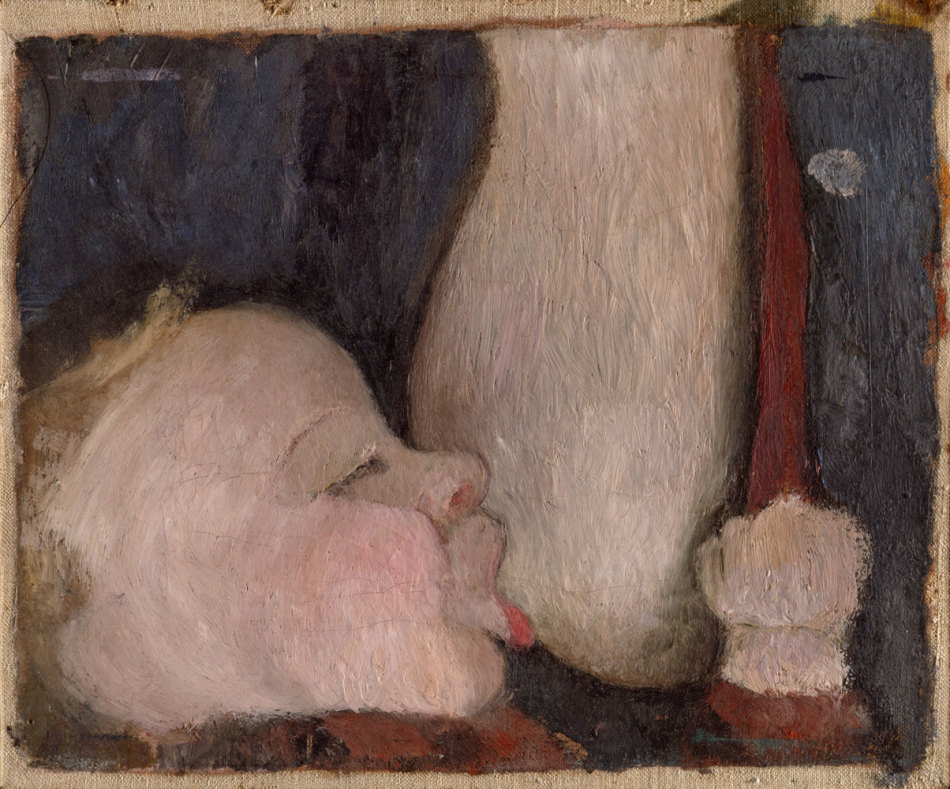
Paula Modersohn-Becker,Baby, Breastfeeding, c.1904.
Oil tempera on canvas. 23.4 x 28.2 cm. © Niedersächsisches Landesmuseum Hanover. Permanent loan from the Rut- und Klaus-Bahlsen-Stiftung.
In the light of that, the woman artist has a clear choice: to adopt male objectivity and hope to ‘pass’ as an honorary man; or to declare her femininity and its themes from the outset. This is a choice not just about making art but about living. What strikes one now about, for instance, the work of Paula Modersohn-Becker, one of the artists in the Academy’s show, is the clarity with which she can be seen choosing this second path, and experiencing the dawning knowledge of its consequences. She doesn’t entirely know, in other words, quite what it is she is choosing: she is being led by instinct. To be led by instinct is the preeminent freedom we attribute to male artists, and to the making of art itself. There is a self-destructive element to that instinct, and to the creative act, but in this case, the cards have been dealt out in advance: what we see here is a woman stepping out of a relative safety and into the world of her own illegitimacy.
Chantal Joffe RA, in an interview published in the exhibition’s catalogue, rightly identified the instinct in certain woman artists to cleave to their femininity, not as an act of subordination or self-marginalisation but as the first move toward power – a very different power from the ‘dead end’ power of honorary masculinity. The effects of this decision tend to illustrate the reasons why so many woman artists don’t take it. To attain an equivalent power and freedom by that route, the themes of femininity – including domesticity, the body and motherhood – must be scrupulously served. For to be a woman artist – or any artist – in the truest sense is not to suppress the fact of self and identity but to use it ruthlessly as the legitimate basis of representation. Even today, as the career of an artist like Tracey Emin RA demonstrates, the exposure of female material frequently arouses public shock and disgust. Far from aligning with the concept of self-authority, the idea that representing femininity could be framed as an obligation, almost a duty, might seem to constitute a direct threat to basic creative freedom. Making art about motherhood, for instance, looks very much like a quitting of the cultural stage – an admission of defeat that countless women in other spheres of work fend off by trying to maintain the separation between their lives as mothers and their careers. Yet what is the role of the artist in society if not to refuse those very separations and bind herself to the revelations offered by an un-blinkered vision? If the artist’s task is to recognise the principle of change that governs the human relationship to truth, then the serving of it is indeed a kind of duty. The marginalised artist can be no different: it is simply that their truth is more burdensome and onerous to serve.
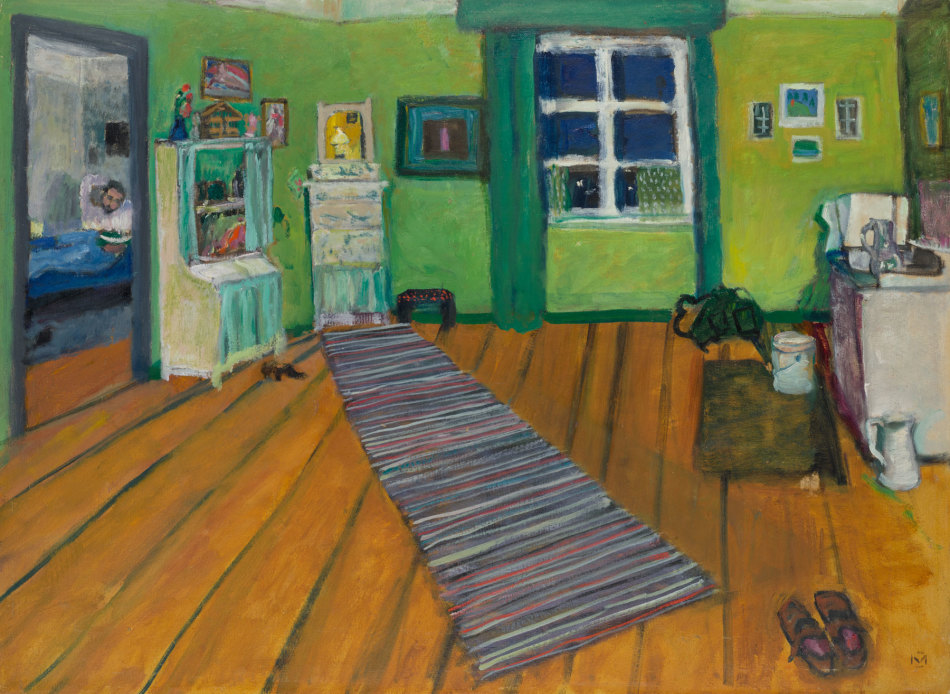 Gabriele Münter,Interior in Murnau, 1910.
Gabriele Münter,Interior in Murnau, 1910.Oil on cardboard. 50.6 x 69.3 cm. Gabriele Münter- und Johannes Eichner-Stiftung, Munich. © DACS 2022.
In the dawn of modernism, in the depths of the male shadow, the same themes emerged that would continue to haunt the Abstract Expressionists half a century later: the question of how to manage the personal disadvantage of femininity, and the problem of inequality as a basis for originality. The married woman, with a degree of domestic stability, has a perverse kind of freedom, until the compromises of marriage – and the childbearing it usually entails – exposes the difficulty of finding a voice there. The life and work of Paula Modersohn-Becker, like that of Sylvia Plath, is violently illustrative: both these women grasped the beauty and brutality of female truth, while appearing to demonstrate that it couldn’t be survived. A Lee Krasner or an Elaine de Kooning, conversely, almost seem to have set aside that truth in order to serve that of the geniuses they were married to, making art that at first glance almost has an air of wifely deference, as if to reassure the world that they are following rather than challenging.
Yet in the hopefulness of early modernism, these divisions seem not yet to be entrenched: the release from the constraint of formality could be viewed as universal. The work of Gabriele Münter offers a compellingly unguarded vista of ordinary life, whose femininity – so unconscious and natural – easily transcends its own internality to deliver the shock of reality. Her Interior in Murnau (c.1910) heralds something new, a female authority found in being: the domestic space that is both familiar and meaningless, the long narrow rug that is half comfort and half penitentiary road, the shoes waiting to be put on, the man seen through a doorway like a figment of imagination – this, we are certain, is what has been happening all this time, only it has somehow eluded representation. Münter’s work has no argument, no politics, no side: rather, it’s as if a silent witness to everything that has gone unnoticed and unmentioned in the creation of male artistic identity had suddenly started to speak. Like Bonnard, Münter uses the frame to denote the self and its simultaneous immersion in and alienation from the scene, its sensation of mild entrapment, though without his interrogation of the egotistical basis of perception: instead the entrapment is an aspect of female being, logical, impersonal. In Kandinsky at the Table (sketch) (c.1911), the blur of familiarity sits strangely with the invocation of her partner’s famous name: we understand that the male is still the interface with the world, on the other side of which the perceiving woman is held, unappeased and stateless.
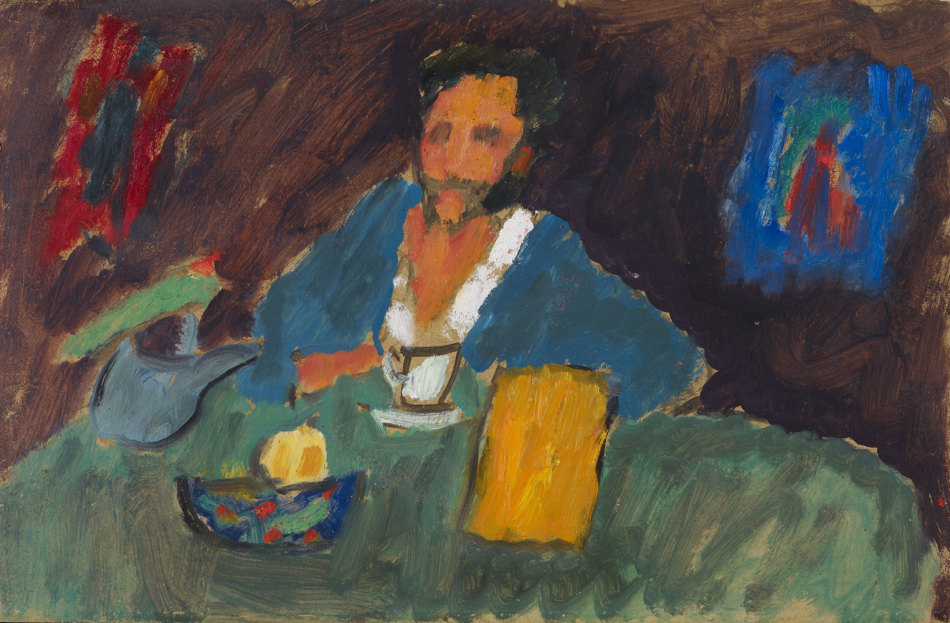
Gabriele Münter,Kandinsky at the Table (sketch), c. 1911.
Oil on cardboard. 25.5 x 39 cm. Kunstsammlungen Chemnitz – Museum Gunzenhauser, Chemnitz Eigentum der Stiftung Gunzenhauser. Archive Museum Gunzenhauser. © DACS 2022.
It may have been the comings and goings of these men that led Münter to begin documenting her domestic life with Kandinsky: her vision is casually rather than militantly personal, which contributes to its unmistakable aura of moral accuracy. The same diffident grasp is evident in male painters of the domestic narrative like Bonnard and Vuillard, and this conscription of ‘female’ material creates an ambiguity for the woman artist, much as Tolstoy and Flaubert and D.H. Lawrence do in their explorations of female and familial life. Münter paints not so much as if she has chosen her subject as simply because she happens to be there: there is the sense that she might just as well be looking at something else. There is a subtle kind of female pathos to this idea, but the difficulty of seeing the female self and its milieu in a more radical light is an obvious one. Can the element of the eternal in the experience of femininity ever be represented as more than an internalised state? Paula Modersohn-Becker’s achievement is to have understood that the possibility of such an advance lay in the female body itself.
The cultural history of the nude is also a history of female compromise and disempowerment: Modersohn-Becker’s realisation that she could be her own model and paint herself represents both an artistic and a societal breakthrough. Societal for the reason that any artist, in creating, is also making a statement about time and space – the created object implies a location, and a period of time spent creating. Virginia Woolf’s famous room of one’s own and five hundred pounds a year – the bare minimum she estimated a woman writer needed in order to create independent art – phrases this implication in concrete terms, but the visual artist’s legitimacy in relation to the created object is of a different order. The writer can notice, and then write about it later; the painter is bound to the act of perception in an inviolable and immediate way. The artist’s studio, as a location, implies absolute freedom, because when the artist is there she is not in any of the places that would make her unfree, that would intervene in or detract from her vision – and the painting is the proof that she was there. A woman who can claim that freedom is – even today – an anomalous woman: the legitimacy of her creation is therefore called into question. One of Modersohn-Becker’s most fascinating innovations is her dramatic reduction of the frame, her use of the ‘close up’ which presupposes both the artist’s moral proximity to the subject and an actual lack of physical space in the work of creating the image. These works do not imply a studio, but rather a cramped domestic environment. Yet they aren’t statements of victimhood: the boldness is intentional. As an unspoken manifesto about women making art, Modersohn-Becker’s vision goes straight to the heart of things.
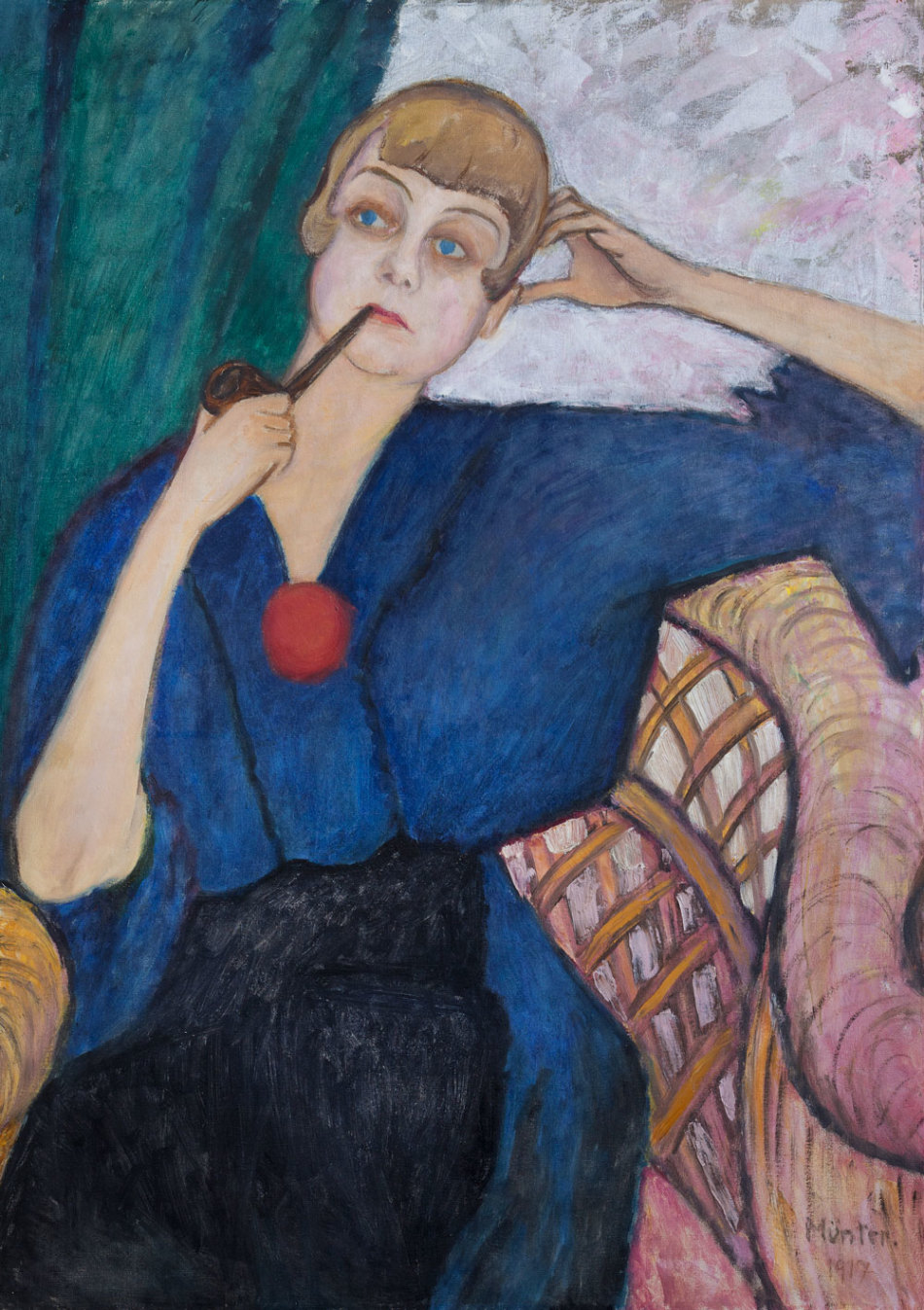
Gabriele Münter,Portrait of Anna Roslund, 1917.
Oil on canvas. 94 x 68 cm. Leicester Museums & Galleries. © DACS 2022..
As an unspoken manifesto about women making art, Modersohn-Becker’s vision goes straight to the heart of things.
Rachel Cusk

Paula Modersohn-Becker,Self-portrait with Lemon, 1906-7.
Oil tempera on cardboard. 50 x 27.5 cm. Paula-Modersohn-Becker-Stiftung, Bremen, on loan from a private collection.
The encroachment of the domestic environment – with its children, pets, clutter, its tides of need and obligation – into the work of these early women artists bespeaks both necessity and a kind of situational hopelessness. This is the path, to be sure, by which a true female vision is to be arrived at, but it will take more than one woman to make the journey: it will be a slow and hard evolution, not the rapid rising of a star. Paula Modersohn-Becker’s Self- Portrait with Lemon (c.1906-07) encapsulates the mystery and melancholy of this transition toward self-being, its mixture of wonder and loneliness, its proximity to a kind of madness. In the coffin-like narrowness of the frame the woman poses, but for whom? The mild evasiveness of her expression is perhaps also a letting down of her guard – this is the expression she wears when no-one is looking. With her yellow necklace and green cloak she seems almost to be in costume, half-ironically dressed up for the painting. But who is looking, noticing? The picture is asking a question about validity, the validity of this image, the validity of making it. The painter is also the subject, and in this moment they seem almost to cancel each other out, to create a deeper kind of invisibility. Yet there is colour, brightness, volume – these things belong to the world. The yellows of the lemon in her hand and of her necklace together constitute a stability: through them the painting redeems itself, this concrete existence and the existence of things, telling her to hang on.
Rachel Cusk is a writer. Her most recent novel Second Place (Faber) was published in 2021

Paula Modersohn-Becker,Mother with Child on her Arm, Nude II, 1906.
Oil on canvas. 80 x 59 cm. Museum Ostwall im Dortmunder U. Photo: Jürgen Spiler, Dortmund.
Making Modernism,The Gabrielle Jungels-Winkler Galleries, Royal Academy of Arts, until 12 Feb 2023. Supported by BNP Paribas with additional support from the Huo Family Foundation, the Tavolozza Foundation, and the International Music and Art Foundation.
Related events include artist Chantal Joffe RA and curator Dorothy Price in conversation about the show (23 Nov); see here



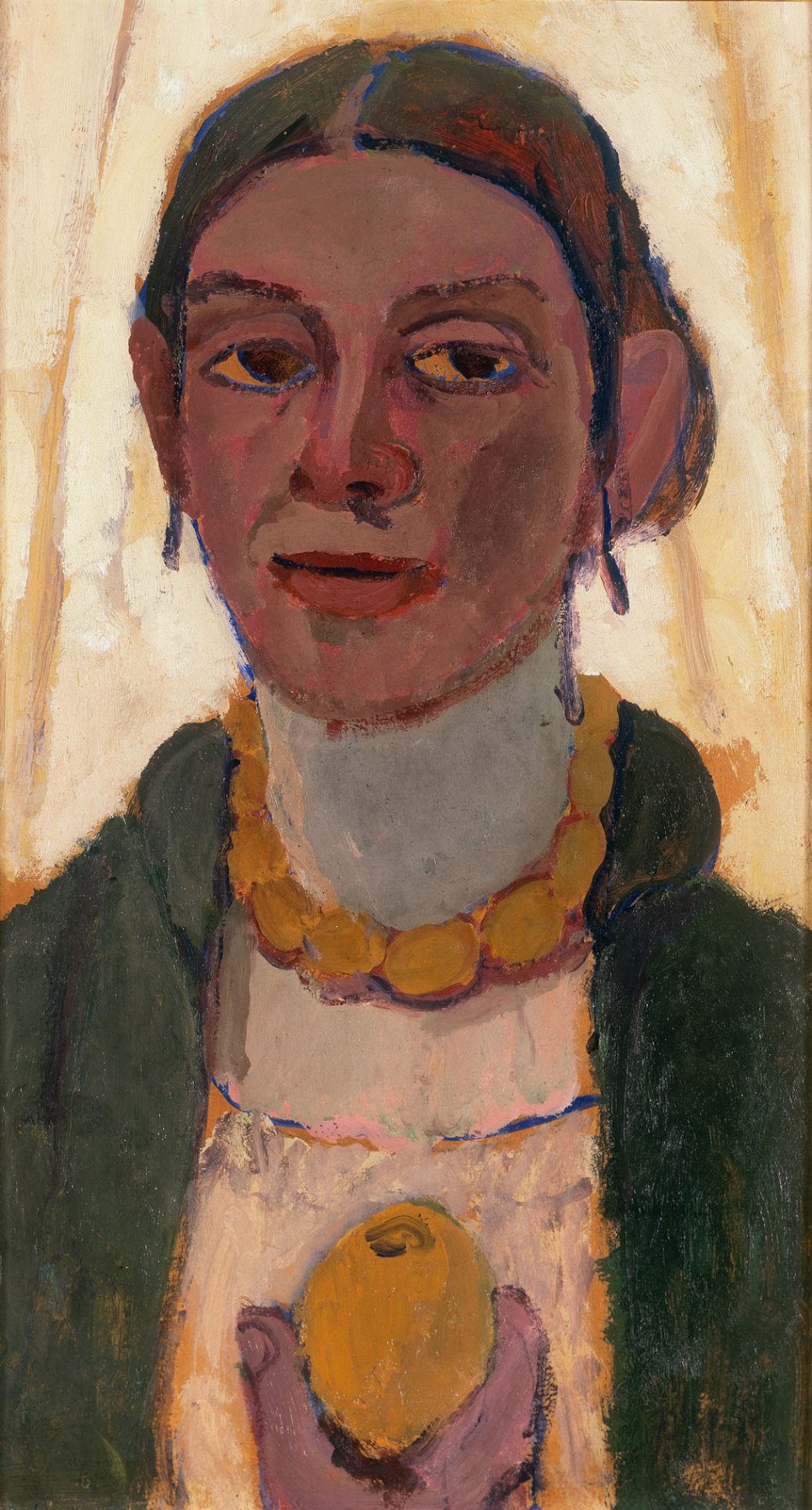
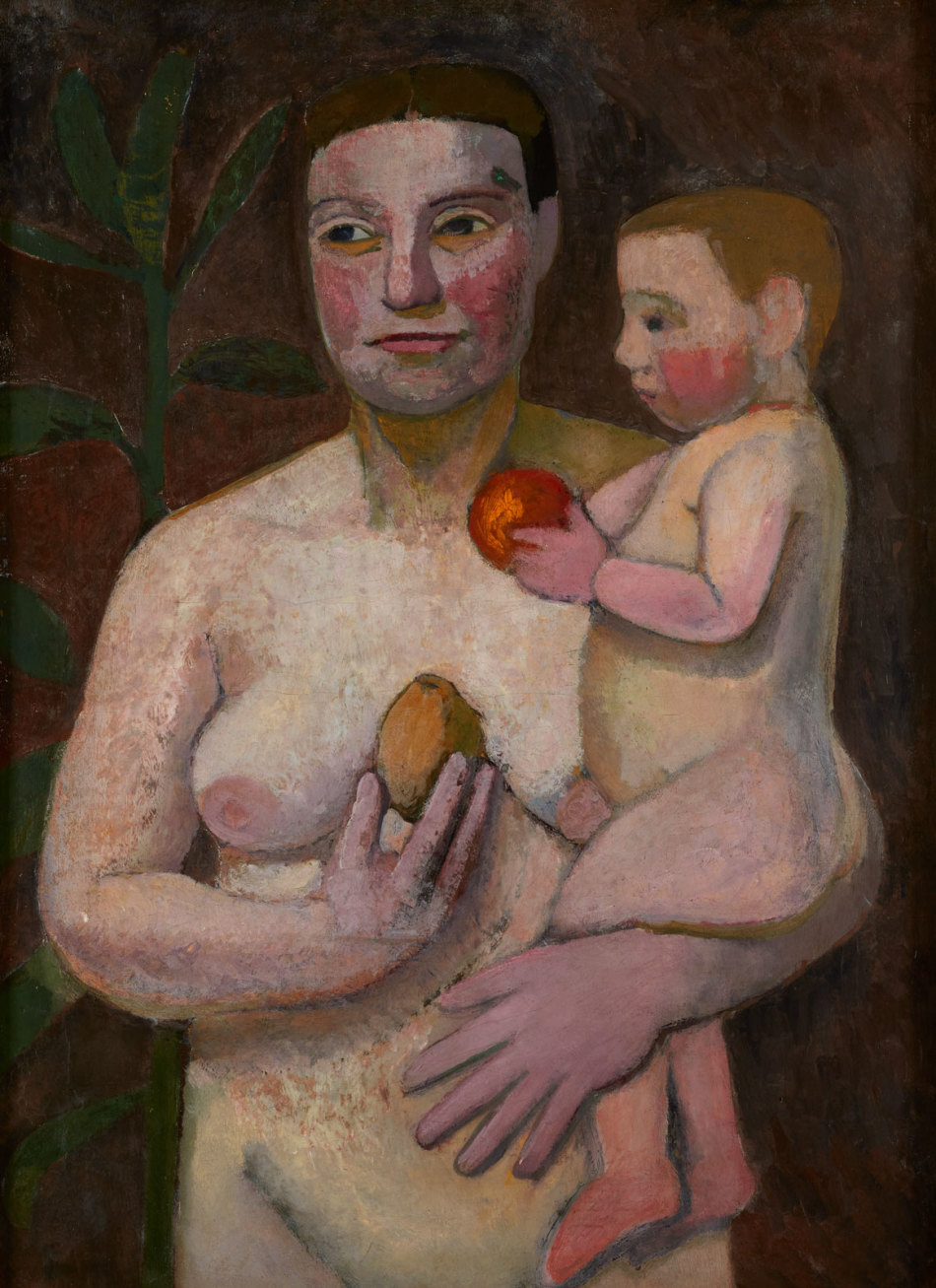

Comentarios
Publicar un comentario